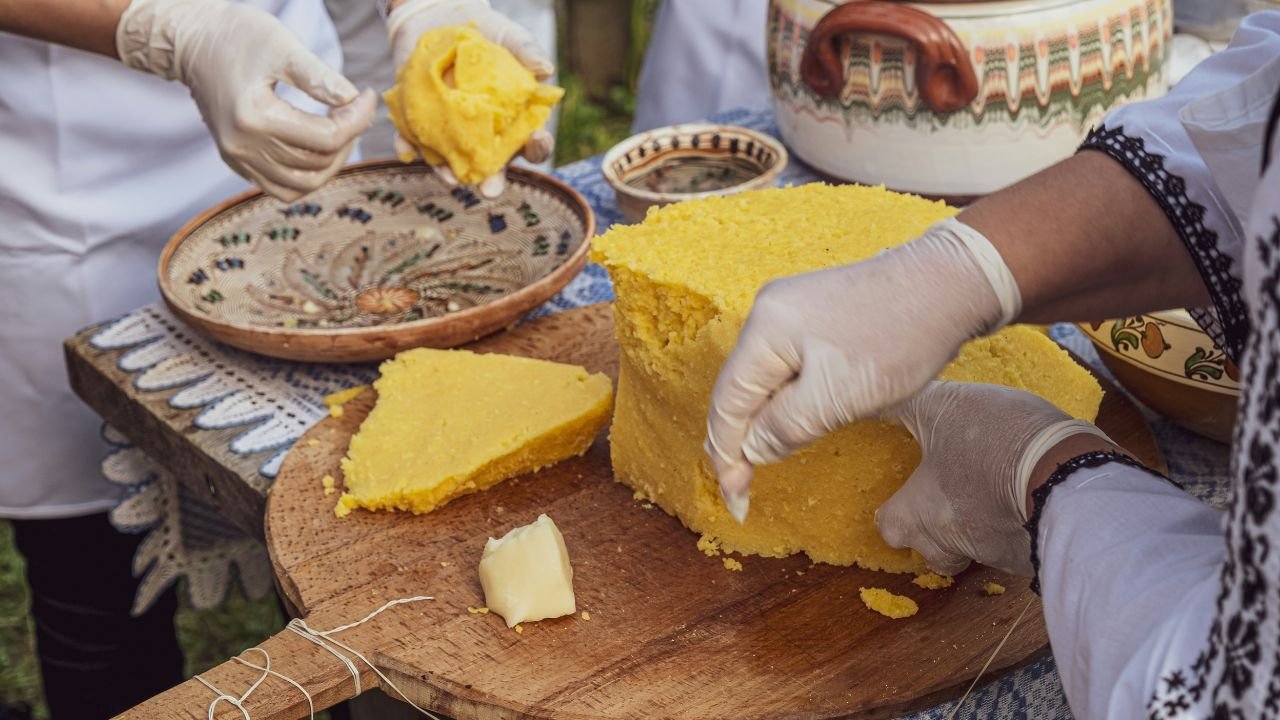FOOD
Exploring the Rich Flavors of Romanian Cuisine

Step into the vibrant world of Romanian cuisine, where rich flavors and centuries-old traditions come together to create a culinary experience like no other. From hearty stews to savory pastries, Romania’s food scene is a delightful blend of influences from its diverse history and landscapes. Join us on a tantalizing journey as we explore the essence of Romanian gastronomy, uncovering the secrets behind some of its most beloved dishes and highlighting the talented chefs who bring them to life. Get ready to tantalize your taste buds with the unique flavors of Romania!
Influences and History of Romanian Cuisine
Romanian cuisine is a vibrant tapestry woven with influences from various cultures that have crossed paths with Romania throughout history. Dating back to the Dacians and Romans, Romanian gastronomy has been shaped by invasions, trade routes, and migrations over centuries.
The Ottoman Empire’s rule left behind a legacy of rich flavors like spices, baklava, and kebabs in Romanian dishes. The Austrian-Hungarian empire brought influences such as schnitzels and strudels to the table. Additionally, the Slavic influence introduced hearty stews and fermented foods into traditional Romanian cooking.
During Communist rule post-World War II, rationing led to resourcefulness in the kitchen where preserving techniques like pickling thrived. With Romania’s entrance into the European Union in 2007 came an influx of Western culinary trends while still holding onto its roots.
Today, Romanian cuisine is a harmonious blend of these historical influences resulting in a diverse culinary landscape worth exploring.
Staple Ingredients in Romanian Dishes
Romanian cuisine is renowned for its rich and hearty flavors, which are achieved through the use of staple ingredients that have been a part of traditional Romanian dishes for centuries. One such ingredient is mămăligă, a beloved cornmeal dish similar to polenta that often serves as a base for many meals. Its versatility makes it a staple at the Romanian dinner table.
Another essential component in Romanian cooking is pork, which features prominently in various dishes like sarmale (cabbage rolls stuffed with minced meat and rice) and mititei (grilled sausages). The use of fresh herbs such as dill, parsley, and lovage adds depth to the flavors of Romanian cuisine.
Cabbage, eggplant, bell peppers, sour cream, and sheep’s milk cheese are also commonly used ingredients in Romanian dishes. These staples contribute to the distinct taste profile that sets Romanian cuisine apart from its European counterparts.
Traditional Romanian Dishes to Try
Embark on a culinary journey through Romania and savor the traditional dishes that have been passed down through generations. One iconic dish to try is “Sarmale,” cabbage rolls stuffed with a flavorful mixture of minced meat, rice, and spices cooked to perfection. Another must-try is “Mămăligă,” a creamy polenta dish often served as a side or base for various toppings.
Indulge in the rich flavors of “Ciorbă de Perisoare,” a sour soup featuring meatballs and vegetables in a tangy broth. For those with a sweet tooth, don’t miss out on “Papanasi,” fried doughnuts filled with soft cheese and topped with jam and sour cream – a delightful treat that perfectly balances sweet and savory flavors.
Experience the heartiness of “Tochitura Moldoveneasca,” a pork stew cooked with onions, garlic, peppers, tomatoes, and served alongside polenta or potatoes. Finish off your Romanian feast with “Placinta cu mere,” an apple pie-like dessert made with layers of flaky pastry filled with spiced apples.
Famous Chefs and Restaurants in Romania
When exploring Romanian cuisine, it’s impossible not to mention the talented chefs and renowned restaurants that have elevated traditional dishes to a whole new level. In the heart of Bucharest, Chef Joseph Hadad at Maize Restaurant combines local ingredients with international techniques in innovative ways. His passion for showcasing Romania’s culinary heritage shines through each dish he creates.
For a taste of modern Romanian gastronomy, head to Zexe Braserie in Cluj-Napoca where Chef Adi Hadean redefines classic recipes with a contemporary twist. The restaurant’s cozy atmosphere and impeccable service make it a must-visit for food enthusiasts looking to experience the evolution of Romanian flavors.
If you find yourself in Brasov, don’t miss the chance to dine at Sergiana Restaurant, known for its authentic Transylvanian cuisine prepared by Chef Gabriel Toader. The rustic charm of the place coupled with hearty dishes will transport you back in time while tantalizing your taste buds with rich flavors unique to the region.
These are just a few examples of the many talented chefs and exceptional restaurants scattered across Romania waiting to delight diners with their creative take on traditional Romanian cuisine.
Regional Variations in Romanian Cuisine
Romanian cuisine boasts a rich tapestry of flavors and influences, with each region offering its unique twist on traditional dishes. In Transylvania, you’ll find hearty stews like “Varza a la Cluj” made with sauerkraut and pork, reflecting Hungarian and German culinary influences. The Moldova region is known for its sweet treats like “Papanasi,” fried doughnuts served with sour cream and jam.
Head towards the coast in Dobrogea to savor seafood-based dishes such as grilled fish or “Salata de icre,” a spread made from carp roe. In Oltenia, meat lovers will delight in dishes like “Musaca,” a layered casserole of potatoes, minced meat, and cheese baked to perfection. Don’t forget about Muntenia’s obsession with polenta (mamaliga) served alongside braised meats or stews.
Each region in Romania brings something special to the table when it comes to culinary delights!
Tips for Cooking Authentic Romanian Meals at Home
Ready to bring the rich flavors of Romanian cuisine into your own kitchen? Here are some tips for cooking authentic Romanian meals at home.
First and foremost, make sure to stock up on staple ingredients like eggplant, cabbage, sour cream, dill, and paprika. These traditional elements will help you achieve that distinct Romanian taste in your dishes.
Experiment with traditional recipes like sarmale (stuffed cabbage rolls), mămăligă (polenta), or ciorbă de burtă (tripe soup). Don’t be afraid to get creative with seasonings and spices to tailor each dish to your liking.
Explore regional variations in Romanian cuisine by researching specific dishes from Transylvania, Moldova, or Wallachia. Each region has its own unique culinary traditions worth exploring.
Consider visiting local markets or specialty stores to find authentic Romanian ingredients that might not be readily available at regular supermarkets. Fresh produce and quality meats can make a big difference in the final taste of your dishes.
Don’t rush the cooking process – take your time to simmer stews slowly or let flavors meld together for truly delicious results. Enjoy the journey of creating homemade Romanian meals bursting with flavor!
Conclusion
As we wrap up our culinary journey through Romanian cuisine, it’s evident that the flavors and dishes are as diverse as the country itself. From hearty stews to sweet pastries, each bite tells a story of tradition and innovation.
Exploring the rich history and influences behind Romanian cuisine has shed light on how this unique culinary landscape has evolved over time. The blend of Eastern European, Balkan, Turkish, and Hungarian elements creates a tapestry of tastes that is truly unforgettable.
Whether you’re sampling iconic dishes like sarmale or mămăligă or venturing into lesser-known regional specialties, there’s no shortage of delights to discover in Romanian gastronomy.
From bustling city eateries to quaint countryside taverns, Romania boasts a vibrant food scene where talented chefs put their own spin on classic recipes while staying true to authentic flavors.
So next time you’re craving a taste of something new, consider delving into the world of Romanian cuisine – who knows what delightful surprises await your palate!
FAQ’s
Q: What makes Romanian cuisine unique?
A: Romanian cuisine stands out for its hearty and flavorful dishes influenced by a rich history and varied regional traditions. The use of staple ingredients like pork, cabbage, polenta, and sour cream creates a distinctive taste that is hard to find elsewhere.
Q: Are there vegetarian options in Romanian cuisine?
A: While Romanian cuisine is known for its meat-heavy dishes, there are also delicious vegetarian options available. Dishes like zacusca (a vegetable spread), stuffed bell peppers with rice, or eggplant moussaka showcase the diverse flavors of Romanian vegetarian cooking.
Q: Can I find Romanian restaurants outside Romania?
A: Yes! With the growing popularity of international cuisines, you can now find Romanian restaurants in various countries around the world. These establishments offer an authentic taste of Romania’s culinary heritage.
Q: How can I experience traditional Romanian cuisine if I can’t travel to Romania?
A: If you can’t make it to Romania, consider trying out local Eastern European restaurants or experimenting with recipes at home using authentic ingredients like smoked meats, pickled vegetables, and aromatic spices commonly found in traditional Romanian dishes.
-

 Tech1 year ago
Tech1 year agoHow to Use a Temporary Number for WhatsApp
-

 Business2 years ago
Business2 years agoSepatuindonesia.com | Best Online Store in Indonesia
-

 Social Media1 year ago
Social Media1 year agoThe Best Methods to Download TikTok Videos Using SnapTik
-

 Technology1 year ago
Technology1 year agoTop High Paying Affiliate Programs
-

 Tech10 months ago
Tech10 months agoUnderstanding thejavasea.me Leaks Aio-TLP: A Comprehensive Guide
-

 FOOD12 months ago
FOOD12 months agoHow to Identify Pure Desi Ghee? Ultimate Guidelines for Purchasing Authentic Ghee Online
-

 Instagram3 years ago
Instagram3 years agoFree Instagram Auto Follower Without Login
-

 Instagram3 years ago
Instagram3 years agoFree Instagram Follower Without Login




















